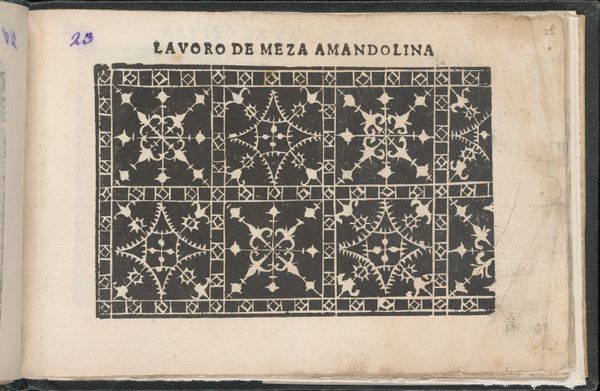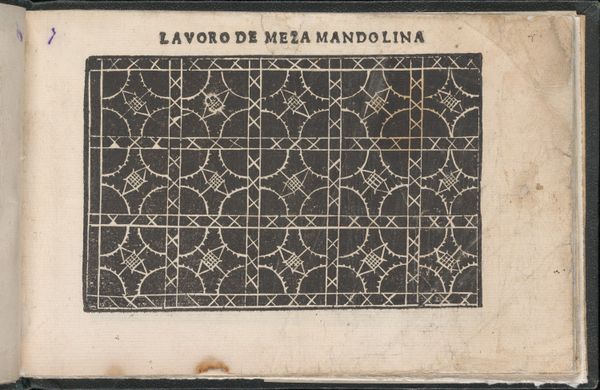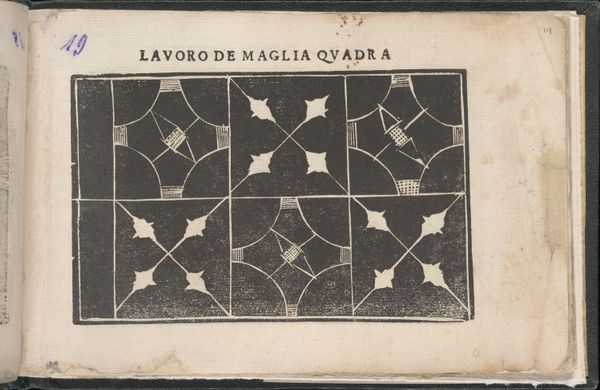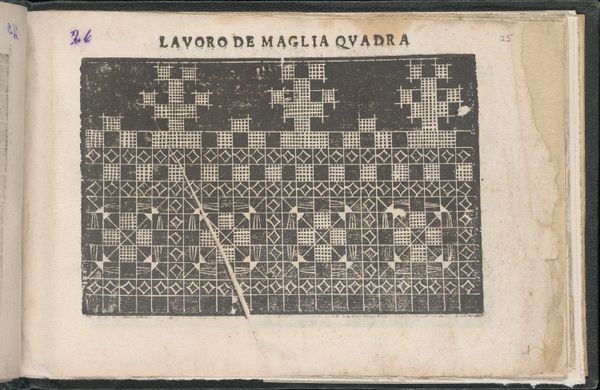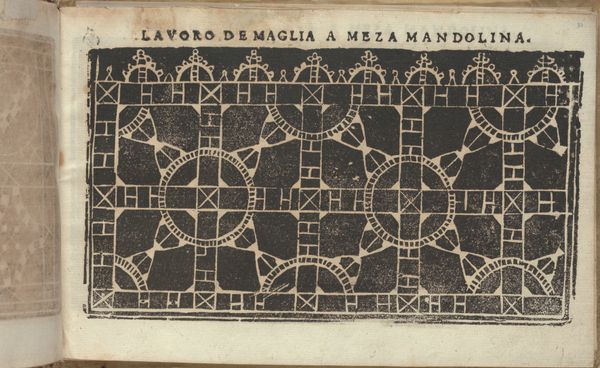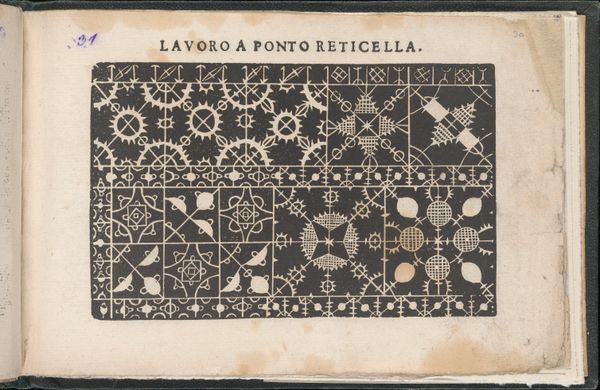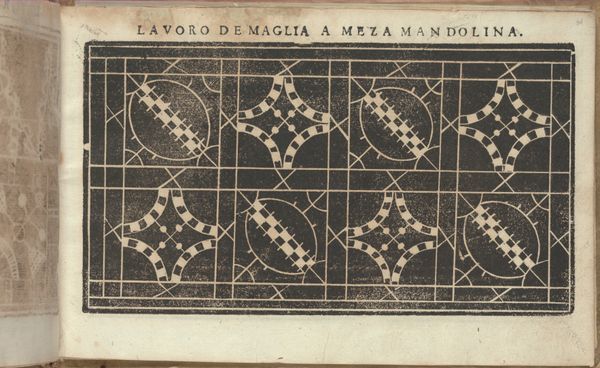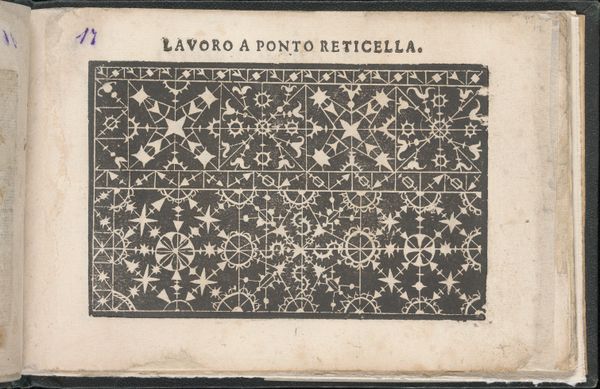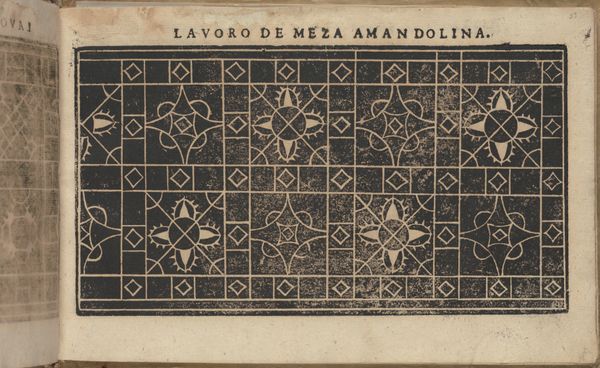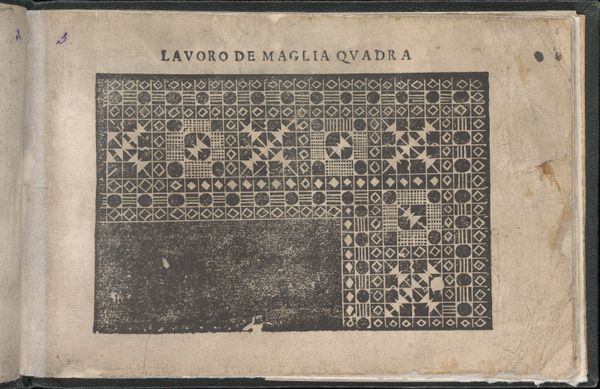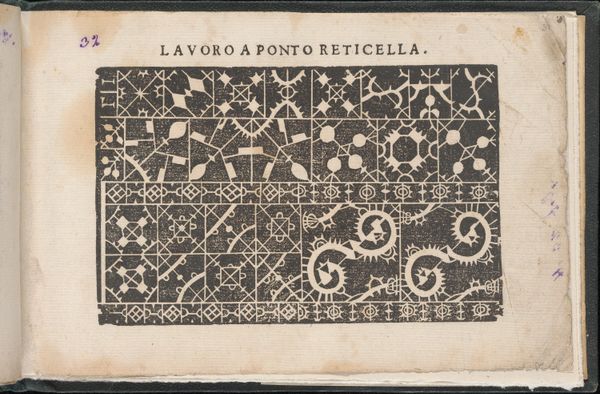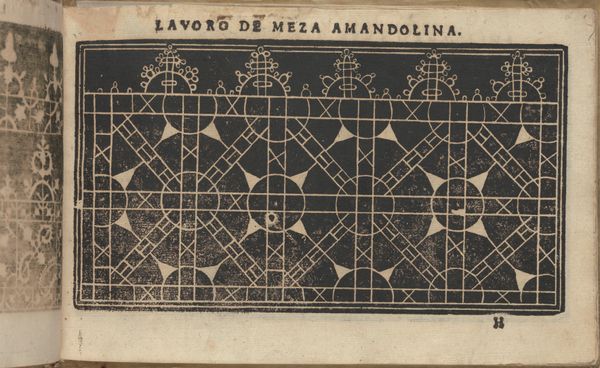
Gemma pretiosa della virtuose donne, page 8 (recto) 1625
0:00
0:00
drawing, print, engraving
#
drawing
# print
#
11_renaissance
#
geometric
#
decorative-art
#
engraving
Dimensions: Overall: 5 5/16 x 7 11/16 in. (13.5 x 19.5 cm)
Copyright: Public Domain
Editor: Here we have "Gemma pretiosa della virtuose donne, page 8," an engraving by Isabella Catanea Parasole from 1625. It reminds me of a sampler, with those precise geometric shapes laid out in a grid. What can you tell me about the piece? Curator: Note how the black ink is not just a backdrop but defines each shape. This creates positive and negative space, each as important as the other in structuring the overall design. What visual relationships can you discern in the interplay of lines and shapes? Editor: I see the squares, definitely. And there are four-pointed stars, some made with straight lines, some with curves. I guess the different kinds of lines create rhythms in the image. Are those supposed to be patterns for embroidery? Curator: Precisely. Consider the linear quality achieved through the engraving process. The artist employs line weight and density to achieve areas of contrast and balance. Notice the arrangement of these elements; observe how they function independently and as integral components within the composition. Editor: It’s interesting to think about embroidery as a structured composition. The repetitive motifs create a unique harmony, right? It moves beyond functionality. Curator: Precisely, beyond its function, it offers a complex, engaging interplay of form and space. I think one starts to appreciate the intentional arrangement and underlying geometric foundation that holds everything together. Editor: Seeing it that way changes how I understand decorative arts. It shows there is more to it than meets the eye. Curator: Indeed, our understanding evolves by looking at intrinsic aesthetic values, revealing artistry in even the most functional-seeming items.
Comments
No comments
Be the first to comment and join the conversation on the ultimate creative platform.
